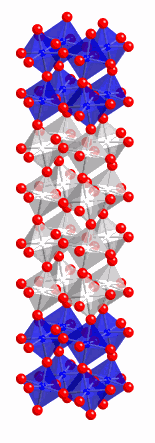Our computers carry out their functions on several semiconducting devices layered together in the very smallest of spaces, known as quantum wells, where nanoscale layers of a semiconducting material are sandwiched between two nanoscale layers of a non-conducting material. As computer makers strive to pack more computational power onto smaller platforms, the microelectronic semiconductors used in today’s computers have almost reached the lower limit for size and functionality.
But a team of researchers from the University of Arkansas and Argonne National Laboratory found that by using complex oxides with correlated electrons confined to quantum well geometry, a new dimension can be added to the mix.
Employing high-energy, high-brightness polarized x-rays at the X-ray Science Division beamline 4-ID-C of the U.S. Department of Energy Office of Science’s Advanced Photon Source, the team examined the lower limits of novel materials called complex oxides and discovered that, unlike conventional semiconductors, these materials not only conduct electricity, but also develop unusual magnetic properties. Their work has been published in Physical Review Letters.
“Contrary to what we have today in modern microelectronics devices based on silicon, here in a single quantum well, which is just four nanometers thick, we now have several functionalities in one device layer,” said article co-author Jak Chakhalian of the University of Arkansas. “Engineers can use this class of material to devise new multifunctional devices based on the electrons’ spin.”
The new structure is based on the concept of correlated charge carriers, like those found in rust, or iron oxide. In rust, if one electron does something, all of the other electrons “know” about it. This phenomenon, called correlated electrons, does not exist in the silicon-based materials that run today’s computers, televisions, complex medical equipment; power cell phones; and keep the electricity on in homes.
“In normal materials used today, electrons don’t care about the movement of one another,” Chakhalian said. “We can predict their properties almost on the ‘back of an envelope’ with the help of powerful computers.” However, with correlated materials, the calculations for the movement of one electron involve tracking the interactions with billions of electrons, and this is beyond modern theory capabilities.
Chakhalian and his colleagues went down to four atomic layers of a correlated complex oxide material based on nickel and sandwiched it in between two layers of non-conducting oxide material based on aluminum. Unlike the semiconducting materials, the complex oxide structure revealed the unexpected presence of both electronic and magnetic properties.
These multiple properties in a single material may allow the semiconductor industry to push the limits of current conventional computers and develop multiple functions for a single device, possibly allowing everyday electronics to become smaller and faster than they are today.
See: Jian Liu1,2*, M. Kareev1, D. Meyers1, B. Gray1, P. Ryan3, J.W. Freeland3**, and J. Chakhalian1, “Metal-Insulator Transition and Orbital Reconstruction in Mott-Type Quantum Wells Made of NdNiO3,” Phys. Rev. Lett. 109, 107402 (2012). DOI:10.1103/PhysRevLett.109.107402
Author affiliations: 1University of Arkansas, 2Lawrence Berkeley National Laboratory, 3Argonne National Laboratory
Correspondence: *[email protected], ** [email protected]
J. C. was supported by the U.S. Department of Defense-Army Research Office under the Grant No. 0402-17291 and National Science Foundation Grant No. DMR-0747808. Work at the Argonne Advanced Photon Source is supported by the U.S. Department of Energy Office of Science under Contract No. DEAC02-06CH11357
The original University of Arkansas news release can be read here.
The Advanced Photon Source at Argonne National Laboratory is one of five national synchrotron radiation light sources supported by the U.S. Department of Energy’s Office of Science to carry out applied and basic research to understand, predict, and ultimately control matter and energy at the electronic, atomic, and molecular levels, provide the foundations for new energy technologies, and support DOE missions in energy, environment, and national security. To learn more about the Office of Science x-ray user facilities, visit http://science.energy.gov/user-facilities/basic-energy-sciences/.
Argonne National Laboratory seeks solutions to pressing national problems in science and technology. The nation's first national laboratory, Argonne conducts leading-edge basic and applied scientific research in virtually every scientific discipline. Argonne researchers work closely with researchers from hundreds of companies, universities, and federal, state and municipal agencies to help them solve their specific problems, advance America's scientific leadership and prepare the nation for a better future. With employees from more than 60 nations, Argonne is managed by UChicago Argonne, LLC for the U.S. Department of Energy's Office of Science.

